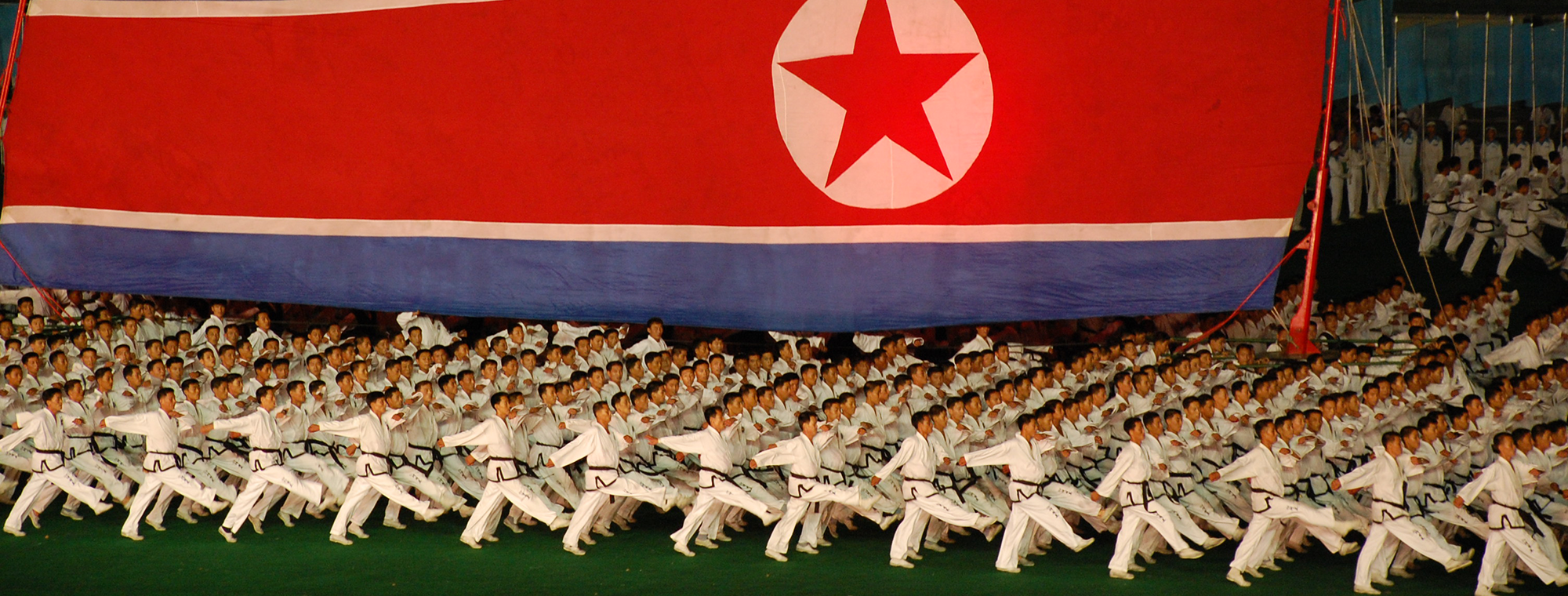The assassination of Kim Jong-Nam, the older half-brother of North Korean dictator Kim Jong Un, is yet another bizarre, “can’t stop watching” episode in a string of reality TV events that is now commonplace in our public discourse. It’s easy to get sucked into the intrigue, but it distracts from the big picture: the US is in middle of a slow-motion train-wreck with North Korea over its nuclear weapons and missile program. Unless we do something about it now, a “metal on metal” collision could be in the offing – a full-blown crisis marked by more North Korean tests and calls within Washington for military strikes to stop them.
Kim Jong Nam’s murder and the subsequent media circus obscure three more crucial events: China’s decision last month to ban all coal imports from North Korea, the February 11 test launch of a mobile, land-based, solid-fueled missile and, critically, the annual US-South Korean military exercises – Foal Eagle and Key Resolve – happening this month.
A substantial and unexpected shift in policy, the Chinese ban on coal – if implemented – would effectively cut North Korea off from an estimated $1.9 billion in export earnings, or anywhere between 33% to 50% of its total trade, depending on whose numbers are used. Bottom line, in one move China has given up a huge amount of economic leverage, effectively telling the US: “It’s your problem now – to solve or make worse.” Regardless, there is little doubt the North Koreans are seething.
North Korea’s recent successful test of an intermediate-range missile, which is land-based, mobile and solid-fueled, only exacerbates a bad situation. This missile, when operational, will be harder to detect and destroy compared to the stationary, liquid fuel rockets the North currently possesses. Not only will North Korea have a less identifiable first strike capability, it also will have the capacity to absorb an initial attack and retaliate with something nuclear-tipped. This seriously changes the security equation on the Korean Peninsula. It is not a coincidence that we are now hearing increasingly loose talk within the DC beltway about so-called “preemptive” strikes on North Korea.
Needless to say, the situation couldn’t be more loaded as this year’s US-South Korean military drills – which in the North’s mind are potentially existential provocations – kick off. In response to North Korea’s spate of missile and nuclear weapons tests since early 2016, the US and South Korea have indicated these 2017 exercises will be more “robust,” and we can expect them to again include rehearsals for surgical strikes on North Korean leaders and its nuclear facilities.
To top it off, this year we have Kim Jong Un on one side – a young, relatively inexperienced, and unpredictable leader prone to aggression when challenged who could be facing internal turmoil (one explanation for killing his brother and reportedly, four senior regime officials by anti-aircraft fire). On the other side, we now have Donald Trump. In such a high-stakes standoff, where perception in the context of deterrence is everything, if we’re not careful these two leaders could prove to be a volatile – and deadly – mix.
What we have then is a regional tinderbox ready to be lit by a small spark that could lead to an exchange of fire and subsequently another war.
Given the immense downsides, is there something we can do to keep these military exercises from prompting unnecessary and dangerous escalation? Possibly. While at this late stage there is no time for wholesale changes to our military exercises (nor would we want to do so), they can be modified to reduce perceptions that forces are being configured for a real attack on the North, so long as we don’t lose sight of the need to maintain operational readiness and deterrence, for which there can be no compromise.
Operationally here are just a few of many adjustments that some experts feel might be worth considering now and later:
- Reduce inflammatory rhetoric by US and South Korean military and civilian leaders during exercises. Last year the public record was full of references to rehearsals for “surgical strikes” on North Korean military facilities and “decapitation raids” by special force targeting the North Korean leadership. Done to send a blunt message of resolve, it also puts an already nervous North Korea on edge.
- Alter the role of B52 and long-range nuclear capable bombers. At the very least, the planes should not be flown in conjunction with the deployment of large ground force maneuvers, as the North would see this as an indicator of a planned first strike. They also harken back to bombings of North Korea during the Korean War, and to their threatened use during a crisis along the North-South border in August 1976.
- Invite China, Russia or another country to observe the exercises in real time. Another possibility would be to invite South Korean, US or international non-governmental organizations to observe. Such third parties could provide “less biased” reporting of events; their presence would give more confidence that the exercises are not a disguise for a real attack.
- Propose the resumption of Korean War MIA remains recovery by US government personnel in North Korea, which were suspended in 2005. The resumption of this kind of joint effort for humanitarian reasons would give the North added assurances because, it reasons, an attack would not come if Americans are on the ground. The act of proposing these efforts sends an immediate message even though it would take time to implement.
- Hold daily briefings by South Korea and the US on the exercises. These briefings would include an explanation of the prior day’s activity as well as a description of what is being planned for subsequent days. This would allow the North to compare the official explanations to what is actually happening on the ground.
Taking such steps could help defuse an exceptionally charged situation in the short term. But we also must keep our eye on the long game. Even if we manage to get through the next few months unscathed, the US and its allies will still be left with a daunting reality: a hostile, unstable foe on the road to greater nuclear strength. If we want to change this, the West must rethink its tired status quo policies. Its ineffective mix of UN denouncements, sanctions, bluster and threats will do nothing to stop North Korea from having approximately 40 to 50 nuclear weapons worth of fissile material capable of hitting all of South Korea and Japan in five years, and in 10 years, a missile system capable of hitting the continental United States.
International sanctions or coercive actions that are too crushing could be especially dangerous. No matter how satisfying this would be, we would risk incentivizing rogue elements within the North to sell and smuggle fissile material to terrorists, or possibly cause a coup or collapse that could lead to a “loose nukes” situation. In the wrong hands, even a small amount of plutonium around the size of a soft ball could obliterate a small city.
Failure of imagination. There’s a lot of it going around. Brexit, ISIS – and Donald Trump. This failure aptly applies to North Korea’s actions as well. But there is also a profound failure to imagine how these dire future scenarios can be averted: direct talks and a political solution. In the case of North Korea, this is particularly challenging. But we must make some hard choices now – or they will be made for us. Because, as the past with North Korea has shown, the situation will only get worse if we don’t.
The Slow-Motion Train-Wreck Over North Korea's Nuclear Weapons and Missile Program by @PhilipYun_PF.





